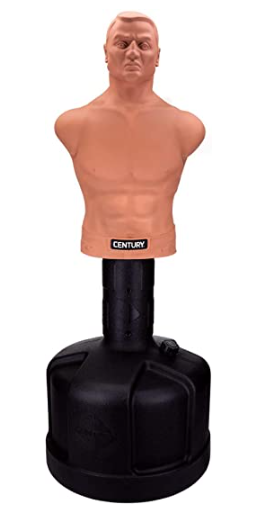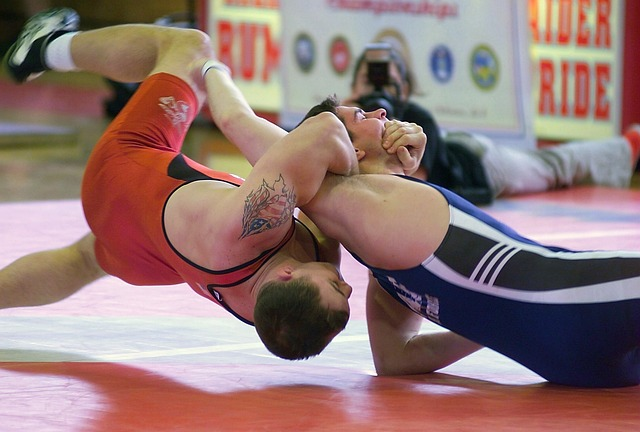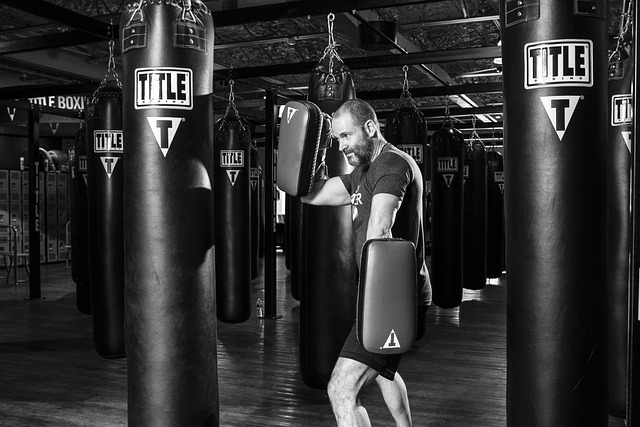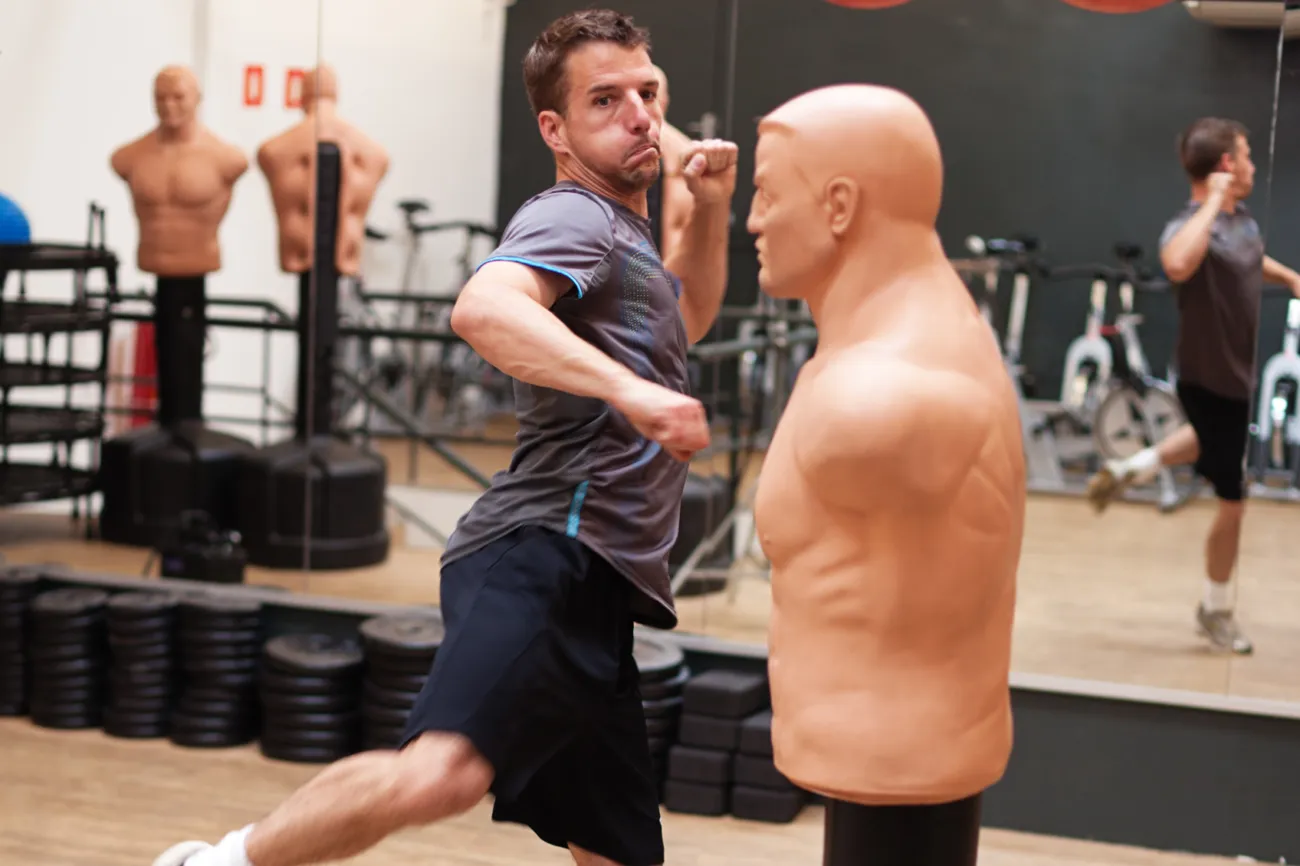Have you ever wondered why punching dummies matter that much in the world of boxing? What makes a fighter who trained on a punching dummy so superior compared to the one who took part in punching bag sessions instead?
Well, the answer is pretty simple – the feel of the fight matters in boxing and MMA. It’s not the same when you land punches to the heavy bag and to the realistic head or body. Punching dummy bags is extremely important. Angles matter, you practice differently, your strikes land under a different angle, and there will be greater chances of scoring points if you train properly.

Sometimes bouts go to judges’ scorecards or a decision. If that happens, a more technical fighter leaves the ring with his hand raised. The technicality of your kicks, torso strikes, and even leg kicks could bring you a victory in a kickboxing or boxing bout.
Punching dummy is a keyword in the boxing world because there is a massive difference between a heavy bag and a real human. Yes, Century Bob will not move with you, but you can deliver the most accurate hooks and uppercuts to any area of your opponent.
Training on a punching dummy is recommended at least once or twice per week – do it and you’ll increase your progress towards the top of the division. There are so many training options, but if you want to be the best, you’ll have to train like a champion!
Punching Dummy: The Boxing Trainer’s Best-Kept Secret
A punching dummy is a realistic training tool that is designed to remind of the real opponent and, in some cases, simulate its movements. The main purpose of punching dummies is to teach the fighter to hit under the proper angle, at the sweet spot, that brings points. Additionally, hard and accurate hits could lead to knockouts.
The ultimate difference between a punching dummy and, for example, heavy bags or teardrops, is a realistic feel. For example, a heavy bag will sway and you’ll be able to deliver powerful and quick punches or kicks, but they are not going to land on the chin or behind the ear. Even kids can learn to deliver a fatal blow with good Century Bob or another realistic practice dummy.
There are four types of punching dummies available in the market:
- Body opponent bag – a true punching dummy bag that mimics the feel and shape of the human body. It is way more expensive due to its high-quality and realistic feeling.
- Inflatable bags – very good for fitness workouts, but a bad choice for a beginner who’s trying to build perfect technique and power.
- Grappling dummies – perfect for any combat sport that includes grappling with punches – mostly works for MMA and BJJ (some models even have the realistic limb length, and you can change the arm or leg positions too).
- Freestanding bags – put your power to the next level, especially if you’re trying to improve the power of your kicks and knees.
Dummy Punching Bag: The Essential Guide For Beginners
Every beginner kicks off his MMA or martial arts run with a stand-up game training. Boxers too. But beginners (kids, adults, even seniors) lack skills – they don’t know to hit properly, under the perfect angle, and injuries mostly happen because of a horrible technique. That’s when the dummy comes to the fore.
There are many benefits of using a dummy punching bag in the training session, and we will discuss the most important ones:
- Learn the technique properly. Practice makes perfect certainly applies here. It is way easier to learn your technique on a realistic-looking Century Bob filled with water than on a huge heavy bag filled with sand or cotton.
- Land under perfect angle. When you learn basic skills, you should start growing. A good angle decreases the chances of an injury and brings more points to the competition.
- Put your striking form to the next level. You can practice a specific strike, for example, a looping hook to the chin, and surprise your opponent in the competition.
- Add new challenges to your game. You can always simulate realistic conditions or stay close to an ideal scenario in the fight. Plus, if a bigger opponent is needed, you can always increase the dummy’s height.
Beginners in martial arts are primarily looking for a good technique. It is harder to fix the error in the later stages of your boxing or MMA training. Dummies are very good to fix your mistakes early in the game. If dummies don’t help, you can always hire a private coach or consider other options.
Once you’ve worked on your technique with a beginner dummy, you might find another level of readiness to explore. I’ve seen that a simple upgrade in gear can make a substantial difference in a fighter’s performance and confidence. If you want to take your training up a notch, you should consider investing in top-quality MMA gloves found in an excellent guide I know of, titled Best MMA Gloves: Elevate Your Performance With The Right Gear. The piece details differences between cheap gloves and top-tier options, showcasing why making such an investment is worthwhile for novice and experienced fighters alike.
Grappling Dummy: The Ultimate Training Partner For Mixed Martial Arts
Grappling dummy works well for submission specialists or ground-and-pound phenoms in the MMA world. You can change positions, hit from different angles, work on various aspects of your game, improve your transitions, and control time… For example, a fighter who attempted an armbar on a dummy 5,000 times won’t think about what to do when his opponent stays in full guard on top of him for too long.
Here is a surprising fact – yes, a grappling dummy can boost your boxing skills. For example, you can put it into a cage seated position and unload punches to the head and body. You can also deliver big bombs from north-south, side control, one-arm trapped, crucifix, half guard… It indirectly leads to great improvements in your stand-up boxing game.
Here are some ideas to utilize a grappling dummy in training:
- Master a specific submission – if you have zero submission skills, this is your chance – check tutorials and work on it.
- Find the best position – fighters who master fighting off the back should put the grappling dummy in the full guard or half guard – add specific training to your game plan.
- Change positions – you’ll rarely spend a round in one position, the MMA referee is gonna stand you up when there is no activity – transition, change levels, and land strikes all the time.
- Fill your grappling dummy with heavy duty material – when possible, do it, it will simulate the realistic opponent – heavier dummy boosts your performance, it is way harder to hold it or shake it off yourself, compared to an unfilled one.

Punching Bag: The Classic Must-Have For Every Boxer
The traditional punching bag works for all kinds of clinch strikes, long-range punches, and very powerful bombs. It moves with you, so you can boost your footwork, angling, counters, ducking, weaving, and other aspects of your boxing game. The traditional bag has one big downside – you can’t learn to land precise punches because of its shape.
A classic bag works for cardio and HIIT training routines. You can build great durability, learn to take part in violent toe-to-toe exchanges, and change levels in a tight space. But its weight will not let it swing too much so it might turn you into a fighter who controls the central line – this might work in boxing or Muay Thai, but not in MMA – the era of Jose Aldo and shoot boxers is coming to an end, the sport is evolving.
The list of punching bag advantages includes:
- Better cardio;
- Stronger strikes;
- Great level changes and clinch fighting;
- Possibility to move around the bag and improve your footwork.

Punching Bags: Exploring The Different Types And Their Unique Benefits
There are many different types of punching bags in the market – speed bags, heavy bags, angled bags, teardrops, and freestanding heavy bags – each model has good and bad sides.
The speed bag is going to skyrocket your quickness and turn you into one of the fastest guys in the division, while a heavy model helps you boost your power and brutality.
Angled bags and teardrops are excellent for all kinds of technical strikes – uppercuts, overhands, clinch knees, hooks, and all types of MMA elbows. A freestanding heavy bag doesn’t move, but the majority of them looks like a real human, which improves accuracy and creates the realistic feel of the fight.
The choice of the bag depends on your future goals. What would you like to improve? Choose a speed bag if you’re powerful but slow. A heavy bag will turn you into a hard-hitting hillbilly. Choose an angled bag to become a technical expert. Or give a freestanding heavy bag (especially Century Bob) a shot when you plan to become the most accurate guy in the division who wins every single decision.
Maintenance is not that hard. Once or twice per week, wipe your training tool with a slightly damp cloth, and use a disinfectant from time to time. You can also dry it after a training session or let it dry on its own.
But here is the most important advice – do not use alcohol or bleach-based disinfectants as this will decrease the life of your training bag! For those who have a leather bag, please use leather conditioner once per month. Another important recommendation for vinyl models – keep them out of sunlight!
Master Your Moves: Unraveling The Punching Dummy’s Role In Dominance
There are different kinds of punching dummies, and every single model boosts different aspects of your striking game. Combine different models of punching dummies to push your skills to the next level and make sure to combine different training sessions.
I will give you an example. You can’t work on the speed bag five times a week because you’ll land pillow punches in the fight. Or your uppercuts and overhands are going to miss over and over.
Make sure to combine all kinds of dummies and bags to maximize your performance. And work on your weaknesses. I’ve seen many good kickers who constantly learn how to kick or knee, but that is wrong. For example, if your uppercuts don’t land, install an angled bag and train – you will notice significant improvements after a month or two!
Or example number two. Do you land weak strikes? Fine, go to the gym to lift weights, install a heavy bag and buy a good pair of gloves. Improvements will happen after a few months. Just work on weak areas of your game, don’t increase the gap between your strengths and weaknesses.
Frequently Asked Questions About Punching Dummy
What do you call a boxing dummy?
A boxing dummy might be any piece of training equipment that helps you to put your striking skills to the next level. Some other names are punching dummies, body opponent bags, and body punch bags. Boxing dummies mostly look realistic and remind of the real opponent.
What is the sparring dummy that fights back?
The Punching Pro model is an innovation in the martial arts market. Instead of turning into a helpless mannequin, it offers a little more challenge. This amazing dummy throws up semi-randomized blocking motions and forces you to dodge and weave by punching right back.
The dummy’s steel arms can swing, tuck, and extend, which brings a lot more challenge to your game and simulates the real enemy and workout.
How to do boxing without a bag?
Shadowboxing is one of the best options for you. If possible, add a mirror so you can auto-correct your mistakes. Optionally, you can spar with your partner.
What is Century Bob?
Century Bob is the most realistic punching dummy on the market. It reminds me of a real human, plus your body and head strikes are going to land under a perfect angle. Add it to your gym if possible, and your precision will skyrocket.
Do I need gloves with Century Bob?
Gloves are recommended unless you plan to participate in a bare-knuckle fight. Different users also adjust Bob’s height for the most realistic feel of the fight.
What is Century Bob made of?
It is made of soft but stable vinyl skin on a complete male head and torso that serves as a perfect striking surface for every single strike, from the jab to a spinning heel kick.
The dummy’s realism is helped by the high-strength plastisol outer, and it has the appearance of real human skin. It is aided by high-density urethane foam filling.

